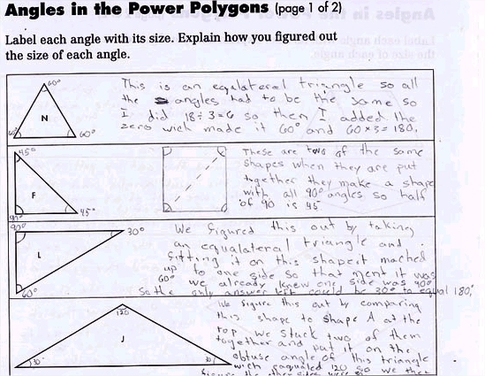Multiple Intelligences and Portfolios

Evangeline Stefanakis
Evangeline Stefanakis worked with Harvard Project Zero and teachers from 13 schools to implement MI and Portfolios into their classrooms. The classrooms ranged from first graders to eight graders. She wrote a book regarding her research findings. One of teachers in the book is Sarah, and here I give you a brief look at how she helped her upper elementary school children by implementing the use of portfolios and the theory of Multiple Intelligences in her upper elementary classroom.
Sarah introduced portfolios to her class at the beginning of the school year and taught them about how even adult use portfolios, like how artists have artist portfolios. She teaches her students the process of building up a portfolio. Collecting works, selecting works they want to put into their portfolio and reflecting on it.
Portfolios serve many purposes. Towards students who struggle with school, they give them a boost of confidence. They also tell students which areas they need to work on and improve. From student's portfolios, Sarah gradually builds a MI profiles of all her students. A child's work and his reflection on it tells Sarah important findings such as the student's strengths and which Multiple Intelligence they excel in, and which part still needs work. Each piece of work tells a lot about a student, and she uses that to her advantage. When a student repeatedly chooses everything but her art pieces, she knows that the student have some problem in that area.
Sarah introduced portfolios to her class at the beginning of the school year and taught them about how even adult use portfolios, like how artists have artist portfolios. She teaches her students the process of building up a portfolio. Collecting works, selecting works they want to put into their portfolio and reflecting on it.
Portfolios serve many purposes. Towards students who struggle with school, they give them a boost of confidence. They also tell students which areas they need to work on and improve. From student's portfolios, Sarah gradually builds a MI profiles of all her students. A child's work and his reflection on it tells Sarah important findings such as the student's strengths and which Multiple Intelligence they excel in, and which part still needs work. Each piece of work tells a lot about a student, and she uses that to her advantage. When a student repeatedly chooses everything but her art pieces, she knows that the student have some problem in that area.
Title.

On the side you see one of her student, Dany's work that he chose to put into his portfolio.
He is asked to label each angle with its size and explain how he got to his answer. By figuring out how he got his answer, he can learn a lot about his thought processes and helps the teacher learn about his thought processes too. Getting to know himself and how he learn is useful so he can use his strengths to his advantage in learning, and know which areas he is weaker in and need to work on.
Other works Dany chose to put in his portfolio include a Revolutionary War Journal in which he puts himself in the shoes of a boy whose father was killed during a war. (Interpersonal, Intrapersonal). He also made a coverpage for his journal (spatial), included a bibliography for the research work he has done about the American Revolutionary War and wrote a reflection. Besides learning about the Revolutionary War and learning to put himself in other's shoes, Dany also gained research skills which will be helpful to him in his life later on.
He is asked to label each angle with its size and explain how he got to his answer. By figuring out how he got his answer, he can learn a lot about his thought processes and helps the teacher learn about his thought processes too. Getting to know himself and how he learn is useful so he can use his strengths to his advantage in learning, and know which areas he is weaker in and need to work on.
Other works Dany chose to put in his portfolio include a Revolutionary War Journal in which he puts himself in the shoes of a boy whose father was killed during a war. (Interpersonal, Intrapersonal). He also made a coverpage for his journal (spatial), included a bibliography for the research work he has done about the American Revolutionary War and wrote a reflection. Besides learning about the Revolutionary War and learning to put himself in other's shoes, Dany also gained research skills which will be helpful to him in his life later on.
Sarah also keeps a portfolio herself and she realizes that her teaching is mainly centered towards writing and math. From here she knows which part of her teaching she needs to modify and change. The great thing about portfolios is that they are a continuous ongoing assessment which continuously helps teachers and students see where they've improved and places with room for more improvement.
Images obtained from:
Images obtained from:
- "Our Authors." Jossey-Bass Education. N.p., 17 June 2010. Web. 8 Jan. 2011. <http://josseybasseducation.com/our-authors/evangeline-harris-stefanakis/>.
- Stefanakis, Evangeline Harris. "Five - The Middle Elementary Years." Multiple intelligences and portfolios: a window into the learner's mind. Portsmouth, NH: Heinemann, 2002. 80 - 97. Print.
